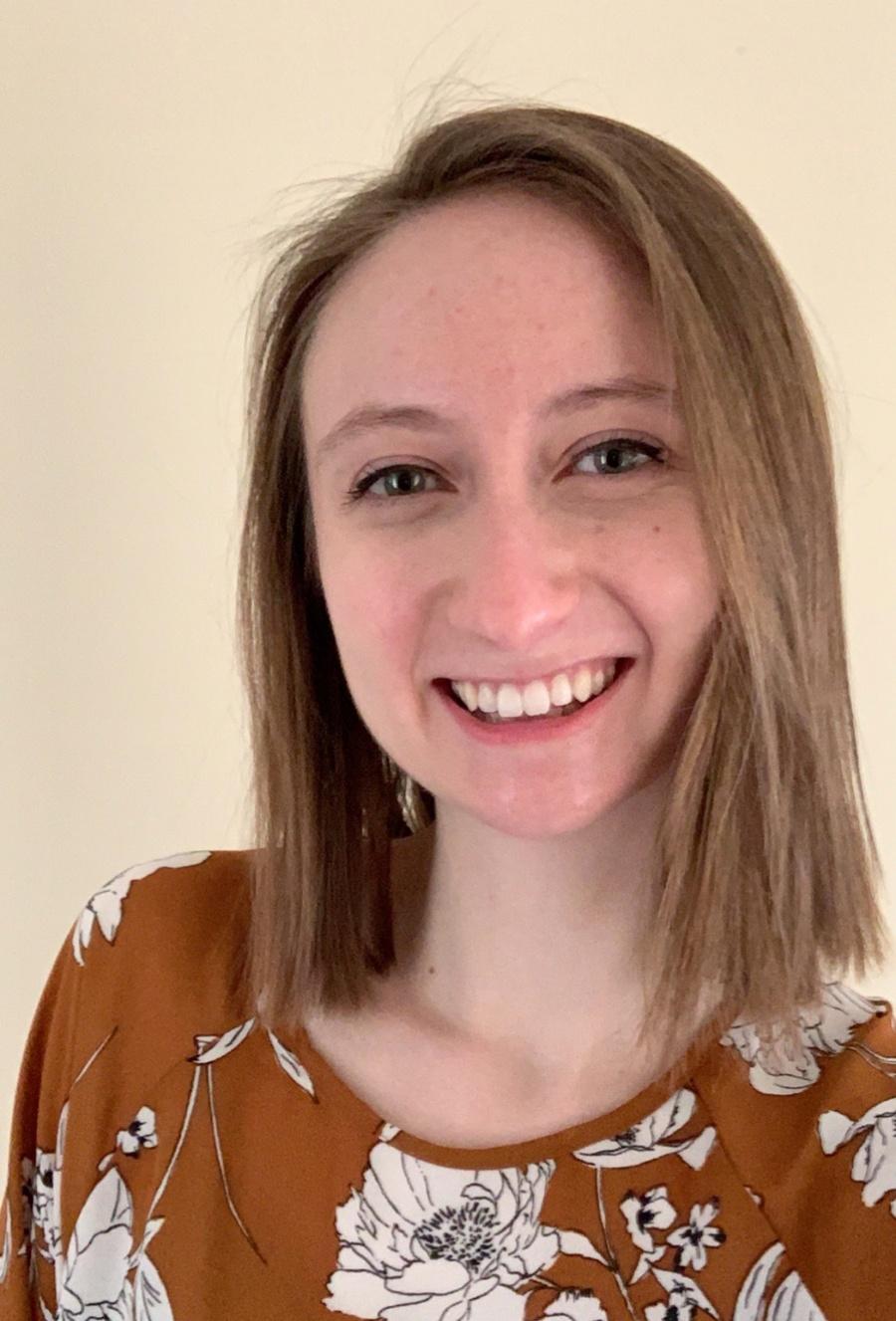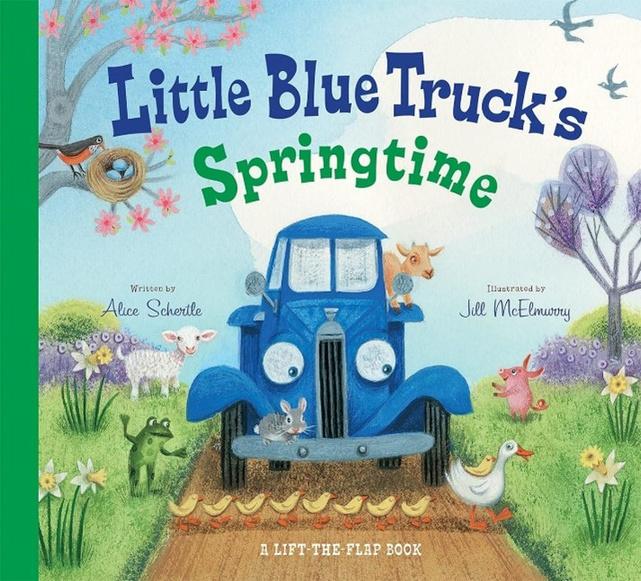




















Throughout spring and beyond, TLC's outpatient departments remain steadfast in our commitment to supporting our families. We're thrilled to announce free Speech-Language, Occupational Therapy, and Hearing Screenings this season! Additionally, our Speech-Language and Occupational Therapy Summer Programs, running from late June to mid-August, are abuzz with engaging activities. These include our Little Friends, Friends Together, and Friends Interacting groups We eagerly anticipate the return of familiar faces and the welcoming of new families.
Amidst the blossoming of spring, we continue to offer individual therapies and evaluations within these programs, alongside our Testing, Tutoring, and Counseling department As you bask in the springtime glow, we're delighted to share updates and information from our outpatient departments. Enjoy the season!
Brigid Baker, OTR/L
Brigid Baker, OTR/L
Director of Clinical Programs
The Treatment and Learning Centers








March 21st marked World Down Syndrome Day, and at TLC's Outpatient Dept, we rocked our socks and celebrating differences! Wh













TLC’s Voice and Upper Airway Program is here to support children and adults with a range of difficulties impacting their voice. These include:
Rough, breathy, strained, strangled, or inconsistent vocal quality.
Abnormally high or low pitch/loud or soft volume.
Vocal fatigue or loss of voice after extended use.
Frequent coughing or throat clearing.
Pain while speaking or singing.
Constant or periodic feeling of a lump in the throat.
Episodes of breathing difficulties.
Frequently running out of breath while speaking or singing.
Voice-related gender dysphoria.
Loss of vocal range in pitch or volume.

Joe Nicol, M.A., CCC-SLP, leads our Voice Program. Joe is a certified speech-language pathologist licensed to practice in Maryland and the District of Columbia. He has clinical expertise in voice and upper airway disorders, gender-affirming voice care, and fluency disorders Joe is certified in Lee-Silverman Voice Training (LSVT) LOUD and is the coauthor of a scholarly article about culturally responsive educational practices. For more information, or to schedule an appointment, contact us at OutpatientScheduling@TTLC.org or (301) 424-5200, ext. 159


Our award winning Summer Programs for children with disabilities is back! Our therapeutic program for children ages three to seven years features a 2:1 child/adult ratio, fun weekly themes, engaging activities, and special visitors. Led by a speechlanguage pathologist and occupational therapist, our summer program promotes development of communication, sensory processing, and motor planning skills We offer morning (9:00am-12:00pm) and afternoon (12:30pm-3:30pm) sessions for either half day or a full day of fun! From June 24 to August 9, TLC Summer Program is where the fun with friends never ends!
Join us on April 10 from 12:00-12:30pm or April 11 from 6:00-6:30pm for our virtual Open House
For more information, to register for Summer Program, or RSVP to our Open House, contact SummerPrograms@TTLC.org
Spring Is Here! Looking for a way to pass the time on those rainy spring days?
Check out these books about spring!







Does your child have difficulty settling down before bed, falling asleep, or getting restful sleep throughout the night? Do you often have to co-sleep with them and remain nearby? Does your child struggle to get enough sleep to remain attentive, calm, regulated, and have energy to get through their day?
If any of these questions make you think about your child’s sleep, they may benefit from a sleep hygiene routine. Occupational therapists work with children and their families to create sleep hygiene routines that allow their bodies to slow down around bed time, fall asleep easier, and remain asleep throughout the night with more independence.
According to CDC, there is a specific amount of sleep needed on average at each age (see the chart).
Newborn (0-3 months):
Infant (4-12 months):
Toddler (1-2 years):
Preschool (3-5 years):
School Aged (6-12 years):
Teen (13-18 years):
Adult (18+ years):
hours
hours
hours
hours
hours
hours
hours

Sleep is one of a child’s many occupations: any task or activity that occupies one’s time and is part of their dayto-day routine. Insufficient or unrestful sleep can impact a child’s cognitive processes, emotional regulation, energy level, memory, frustration tolerance, and overall mood (TheOTToolBox, 2021). Some of the implications of poor sleep hygiene include:
Poor focus
Problems paying attention
Attention and behavior problems
Decreased physical activity
Poor mental health, including depression, depressive symptoms
Unhealthy risk behaviors including alcohol, tobacco, and drug use
Risk-taking behaviors or increased aggressive behaviors
Higher risk of unintentional injury
Establishing a sleep hygiene routine that is specific to your child’s needs and your family’s routine is an effective way to combat these potential risk factors. So, what is a sleep hygiene routine?
A sleep hygiene routine is a sequence of activities taken to prepare your brain, body, and environment for a restful sleep. The steps in the routine can vary based on the child’s needs. It typically includes your selfcare tasks such as bathing, toothbrushing, and changing into your pajamas, preparing a child’s sleep environment with night lights, weighted blankets, essential oil diffuser, and any other activities that help them settle down for sleep including reading a book in bed, turning on their sound machine, nighttime yoga stretches, a mindfulness video, etc.
A sleep hygiene routine should be consistent night to night, so the body associates certain routines with sleep. However, a child’s sleep hygiene routine is not one size fits all. For example, water play during bath time can help some children calm down and can lead other children to becoming more excitable and alert. If your child is more stimulated by water play, then a morning bath time may benefit your child more than at nighttime. Other factors that impact a child’s ability to get good sleep include:

Bedtime routine
Consistent bedtime
Dark room or dimmed lights
Nightlight
Bedtime stories
Bath before bed
Songs and/or prayers before bed
Limit caffeine during the day
Consistent nap times or quiet time during the day
A wake up clock so that kids can see the time to get out of bed in the morning (and not wake up too early)
Quiet, cool, and calm sleeping space
Calm bedtime routine (try to incorporate these bedtime stretches)
If disrupted or decreased sleep is impacting your child’s ability to engage successfully in their day, an Occupational Therapist can help you to create the sleep hygiene routine that will facilitate their successful engagement in the rest of their day.



Most of us know the basic tenets of writing an essay. Unfortunately, the process of writing an essay may not be either clear-cut and/or understandable to everyone. Read on for invaluable essay writing guidance!
Work on your college application(s) and essay(s) as early as possible, ideally by the summer of your senior year. An early start is critical to applying to college(s) with significantly less stress. Create a chart containing your chosen schools including:
School name
Admissions requirements
Due date
Fees
Essay topic(s)
This will be a great resource. Go to the Common Application (commonapp.org) or the specific school application to learn about:
Essay prompts for the personal statement
Supplemental essay prompts, including topic(s)
Maximum and/or minimum word count
Expected topics are as follows: Some students have a background, identity, interest, or talent that is so meaningful, they believe their application would be incomplete without it. If this sounds like you, then please share your story. Lessons we take from obstacles we encounter can be fundamental to later success. Recount a
time when you faced a challenge, setback, or failure. How did it affect you, and what did you learn from the experience?
Reflect on a time when you questioned a belief or idea. What prompted your thinking? What was the outcome?
Reflect on something someone has done for you that has made you happy or thankful in a surprising way. How has this gratitude affected or motivated you?
Discuss an accomplishment, event, or realization that sparked period of personal growth and a new understanding of yourself or others. Share an essay on any topic of your choice. It can be one
Expected topics continued: you’ve already written, one that responds to a different prompt, or one of your own.
Describe a topic, idea, or concept you find so engaging that it makes you lose all track of time.
Why does it captivate you? What or who do you turn to when you want to learn more?
The Common and proprietary applications’ personal statements must be no more than 650 words. Some supplemental essays are shorter at about 250500 words. A strong, impactful personal statement should tell all of the relevant details for the entire story. An essay that runs either far under or over the word count does not necessarily make for a better essay.
Here’s a helpful way to think of a college essay: on a first date one tells the whole story but does not overshare all the details.
It is NOT necessary to lay bare ALL of your trauma in a personal statement. Share the salient details
of the trauma and then speak about the recovery period.
College Admissions staff are looking to learn more about what makes you an individual, what makes you special or unique, what you are passionate about, and/or how you made an impact.
If you did not do well in 10th or 11th grade, then explain why.
If you brought groceries for older people, helped a neighbor, or helped younger siblings with long division, then talk about the impact of these specific activities.
Once you choose the essay topic, the next important step is outlining your ideas. The outline format only has to work for you and could be a blank screen, a specific graphic organizer or a blank piece of paper. A brain dump involves documenting any and all ideas in your head. Do not worry about whether your thoughts are written in full sentences or even if it makes complete sense. Just get your thoughts out of your head. Next, review your notes by removing items that do not seem to belong, adding new ideas that spring into your mind, and reordering your
notes as needed. Continue making your outline more specific by listing specific outline entries under each subtopic or paragraph as appropriate. Keep your essay’s big idea in mind as you create specific subtopic paragraphs with multiple details. One way to think about this is that the details or chips all add up the big idea or cookie.
Writing a thesis statement is a process. Keep in mind that your first attempt will not create a perfect sentence. Rewrite and revise until the sentence is a solidly, wellwritten expression of your big idea and can answer this statement: “My essay will be about . ” You have now created a complete, detailed outline and thesis statement that will allow you to draft a cohesive essay certain to wow readers at your chosen college(s)!
Now, let the writing begin! Admissions staff can easily tell whether the applicant put enough effort into writing the personal statement. At least one month is a good to time approximation to write a rough draft. Write your essay in pieces by paragraph(s) over a period of time determined by your essay due date.

If you closely follow the outline, you will stay on topic more easily. The opening sentence of the opening paragraph should hook the reader easily. Some essays begin by asking then answering a why question. Make sure the last sentence of each paragraph has a transition sentence connecting to the next paragraph. For example, Now that you have written your essay draft, prepare to edit!
Given that the way our thoughts come out of our heads is not always as tightly worded as we may initially think, essays must be edited! If you start editing at least 24 hours after completing the rough draft, you will see and correct more errors. You will need to allow about three weeks to edit your essay(s) multiple times for different purposes. It is recommended to ask an adult in your life to edit the draft as they will provide an objective point of view. Expect to encounter edits ranging from grammar, punctuation, and paragraph content to decrease the total drafted word count. Edit your essay forwards for content and backwards, word by word, for spelling.
Good transition sentences for beginning and ending of each paragraph
Cohesively blending sentences within a paragraph
Check subject/verb agreement in every sentence
Make certain that the verb tense is consistent in all sentences/paragraphs
Use many action verbs as it makes sentences stronger
Check for and edit run-on sentences (about 4 lines or more of typed text)
Check for dependent clauses standing alone
Spell out ALL contractions.
Explain abbreviations for a title or company the first time, use abbreviation thereafter (Department of Commerce (DOC))
Use a Thesaurus to look up words expressing the same thought after 4 uses
Avoid using too many prepositional phrases, i.e., “hands of the clock” becomes “clock hands”
Avoid ending sentences with a preposition or a verb
Do not start sentences with “There is”, “There are”, “So”, “But” or “Because”

Although college essay writing can seem challenging, utilizing the steps of the writing process will enable you to write a tightly worded, stronglyvoiced, well-written essay guaranteed to command the attention of admissions staff at your desired university. Go forth and write!

